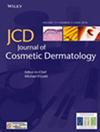Plasma gel, also known as plasma-rich in growth factors (PRGF) gel or platelet-rich gel, is a novel application of platelet-rich plasma (PRP), created by heating platelet-poor plasma (PPP) to induce denaturation, forming a gel-like substance. This gel is then combined with PRP to create a new injectable biomaterial that offers both the regenerative benefits of PRP and structural support due to its gel-like consistency. Plasma gel has been increasingly used not only for its biological regenerative properties but also as a cosmetic filler to enhance tissue volume and improve skin aesthetics. It shows promise in facial rejuvenation by improving skin texture and elasticity, and reducing the appearance of wrinkles. However, the detailed in vivo behavior of plasma gel, particularly its absorption rate and regenerative efficacy, remains underexplored.
This study aims to investigate the in vivo behavior of plasma gel, focusing on its absorption rate and its ability to stimulate tissue regeneration. Specifically, we aim to assess how quickly plasma gel is absorbed after subcutaneous injection and to evaluate its effects on collagen production and neovascularization using a nude mouse model.
Plasma gel was prepared by heating PPP to create a gel-like substance, which was then mixed with PRP. This mixture was injected subcutaneously into nude mice. The absorption of the gel was monitored over time by measuring the remaining volume at different time points. Tissue samples were analyzed using Masson's trichrome staining to detect collagen and CD31 immunohistochemical staining to assess neovascularization to understand the regenerative effects induced by plasma gel.
The study found that plasma gel is absorbed rapidly, with approximately 50% of the volume disappearing within the first week and almost complete absorption by eight weeks. Despite this rapid absorption, significant increases in collagen deposition and new blood vessel formation were observed, indicating strong regenerative properties even after the gel had been largely absorbed.
The main findings of this study suggest that while plasma gel is quickly absorbed and may not be suitable for long-term volumizing effects, it shows significant potential for temporary volume enhancement and as a biostimulatory agent. Plasma gel's ability to promote collagen production and neovascularization makes it valuable in clinical applications where temporary support and long-term tissue regeneration are desired. Future research should focus on ways to extend the retention time of plasma gel and enhance its regenerative effects, potentially through modifications to its formulation or combination with other bioactive substances.



